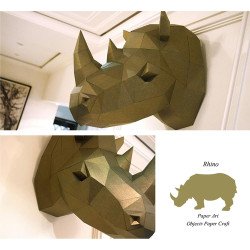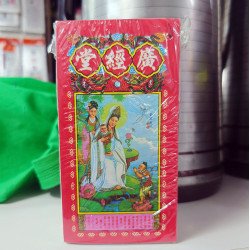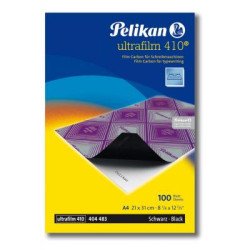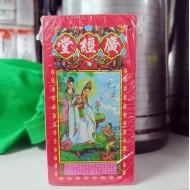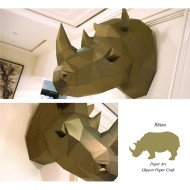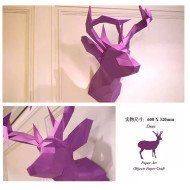
Environmental Issues : Environmental Impact of Elastic Bands and Alternatives
Elastic bands may seem insignificant, but their environmental footprint is astonishing. A lot of energy and chemicals are used in its production. When it is discarded, it increases the burden of garbage disposal and can release microplastic particles, threatening the ecosystem.
As a consumer who cares about the environment, we need to rethink the sustainability of everyday small items. Choosing environmentally friendly natural rubber products or supporting recyclable rubber products is an important way to reduce environmental impact.
Important point
- Elastic production involves energy consumption and the use of chemicals
- Microplastic pollution threatens ecosystems
- It is important to choose recyclable rubber products
- Consumer action can contribute to sustainable development
- Innovative materials are the key to solving environmental problems
The development status of the rubber industry and its environmental impact
In today's industrial development, rubber processing has become a vital manufacturing link. I observe that the rubber industry is facing unprecedented environmental challenges. At the same time, we are actively seeking sustainable solutions.
Key differences between natural rubber and synthetic rubber
Rubber production is divided into two main types: natural rubber and synthetic rubber. They differ significantly in terms of origin and environmental impact:
- Natural rubber comes directly from rubber trees and has a relatively small ecological footprint
- Synthetic rubber is manufactured from petrochemicals and has a higher energy consumption
- Synthetic rubber accounts for more than 60% of the global rubber market
Environmental pollution challenges in the production process
The rubber industry is facing severe environmental pollution problems in the production process. Carbon black particle pollution and chemical emissions are putting enormous pressure on ecosystems. Currently, manufacturers are developing more environmentally friendly containment production methods, although this increases operating costs.
Analysis of global rubber consumption
According to the latest data, the annual global rubber consumption exceeds 17 million tons. The automotive industry is the largest consumer sector, accounting for about 65% of total consumption. The Asia-Pacific region is the main natural rubber producing region, contributing more than 90% of global production.
"Sustainable development is not only a trend, but also an inevitable choice for the rubber industry."
Life cycle analysis of elastic bands
As an environmental researcher, I delve into the life cycle of rubber products. This is a complex and concerned environmental issue. The life cycle of rubber products consists of several critical stages, each of which has a significant impact on the environment.
Rubber aging is the most critical part of the life cycle, and scientists have found that oxygen is the main factor in rubber aging.
Studies have shown that rubber aging is influenced by a variety of factors. This includes chemical composition, molecular chain structure, additives, climatic conditions, and processing environment.
- chemical composition
- Molecular chain structure
- additive
- Climatic conditions
- Processing environment
Life cycle stages | Environmental impact | duration |
Raw material extraction | Land destruction | long-term |
Production process | Carbon emissions | medium term |
Use phase | Resource consumption | short term |
Final Disposal | environmental pollution | Extremely long |
Future research should focus on extending the service life of rubber products and improving recycling technologies to reduce environmental impact.
The threat of elastic bands to marine ecology
Hazards of accidental ingestion by marine organisms
Marine creatures often mistake elastic bands for food, leading to health problems. Studies show that 100% of sea turtle species, 54% of marine mammals and 56% of marine mammals of seabirds are at risk of accidentally ingesting or entanglement in waste. This can lead to:
- Blockage of the digestive tract
- Choking risk
- Nutritional malabsorption
- Internal organ damage
Microplastic pollution is a problem
The microplastics produced by the breakdown of elastic bands are invisible killers. These tiny particles can:
- Enter the marine food chain
- Adsorption of toxic substances
- Threatens the balance of the ecosystem
More than 250 million tonnes of waste are expected to end up in the ocean by 2025.
Impact on coral reefs
Elastic bands not only threaten marine life, but also damage coral reefs. Entwined rubber products can hinder coral growth and reproduction, causing long-term damage.
Marine pollution indicators | data |
Proportion of marine debris sinking | 70% |
Threatened marine species | More than 693 species |
Annual marine animal mortality estimates | Tens of thousands |
It is very important to protect the marine ecology. Reducing the use of elastic bands and increasing recycling rates is our shared responsibility.
Study of elastic decomposition time
When rubber decomposes, it releases harmful substances that pollute soil and water sources. Environmental variables such as light, temperature, and humidity affect the rate at which it decomposes.
"Rubber pollution is one of the biggest challenges for the contemporary environment"
We need to develop rubber materials that are easier to decompose and reduce the burden on the environment. Research has shown that new material technologies can significantly shorten the decomposition time and reduce ecosystem risks.
Rubber type | Average decomposition time | Environmental impact |
Natural rubber | 30-50 years | Moderate pollution |
synthetic rubber | More than 500 years | Heavily polluted |
Discussion of sustainable alternatives
Innovative use of eco-friendly materials
Rubber production is undergoing a major transformation. Innovative materials are reshaping traditional manufacturing models:
- Biodegradable plant fiber material
- Recycled plastic composites
- Seaweed-based eco-friendly material
Reusable alternatives
Reducing disposable rubber products has become an industrial development trend. We have found great potential for the following alternatives:
- Elastic fabric products
- Metal adjustable clamps
- Modular reusable design
R&D of biodegradable materials
Taiwan produces about 150,000 metric tons of waste tires every year, and recycling technology brings hope to the rubber industry. Recycled rubber has been developed to replace 25% virgin rubber, which is an important step towards a circular economy.
"Sustainability is not just a slogan, but also the only way for industrial transformation."
Through innovative materials, circular design and advanced technologies, we are reshaping the sustainability blueprint for the rubber industry. Every small change makes a big difference to the planet.
Consumer Reduction Strategies and Actions
"Small changes can make a big impact"
Actual reduction strategies include:
- Replace plastic bags with reusable mesh bags
- Choose glass containers to store food
- Repair damaged rubber products instead of throwing them away
Reduction method | Expected environmental benefits |
Reuse rubber gloves | Reduce rubber waste by 50%. |
Choose an eco-friendly hair tie | Reduce single-use rubber products by 30%. |
By educating and sharing life experiences on plastic reduction, we can amplify our environmental impact. Every individual's actions are an important force for the protection of the planet.
Corporate Responsibility and Eco-Friendly Manufacturing Processes
Cleaner production technology
Cleaner production technologies are important to reduce the environmental impact of the rubber industry. It utilizes advanced technology to reduce energy consumption and pollution. There are several strategies that businesses can employ:
- Introduction of energy-saving equipment
- Optimize production processes
- Use low-polluting raw materials
Circular economy model
The circular economy model emphasizes the efficient use and regeneration of resources. It is manifested in rubber production:
- Recycling of waste rubber materials
- Develop reusable products
- Reduce raw resource consumption
Waste management
Effective waste management is important for a sustainable rubber industry. Taiwan produces about 150,000 metric tons of waste tires every year, of which 50-70% can be recycled.
Waste management strategies | What to expect |
Waste tire recycling | Reduce environmental pollution |
Recycled rubber technology | Reduce raw material costs |
Recycling | Improve resource efficiency |
"Sustainable development is not only a corporate responsibility, but also our commitment to the earth."
Enterprises should continue to invest in the research and development of environmentally friendly rubber materials. Renewable resources are used to reduce the plastic content. and strengthen environmental education to create a better future for the earth.
Government policy and regulatory support
"Environmental policy is not only a regulation, but also a commitment to the earth"
Currently, more than 60% of rubber waste is disposed of in landfills or incineration. Only 16% are recycled. The government is pushing for stricter environmental regulations.
The goal is to limit the use of single-use rubber products and encourage companies to use green manufacturing processes.
Regulatory measures include increased penalties for non-compliant companies. It will also provide technical guidance and establish an environmental protection evaluation system for the rubber industry. We believe that these policies can help the rubber industry achieve sustainable transformation.
Environmental awareness raising and education promotion
Community Engagement Program
Communities are the foundation of environmental action. We can organize rubber recycling events to encourage people to dispose of rubber products properly. Here are some specific actions:
- Rubber recycling days are held on a regular basis
- Set up a community environmental education centre
- Rewarding residents who actively participate in environmental protection
Campus education programmes
Schools are an important place to foster environmental awareness. We can design specific courses to educate students about the ecological impact of rubber:
- Set up a course on environmental sustainability
- Hold a rubber pollution reduction competition
- Environmental experts will be invited to give lectures
Public advocacy activities
The media and public platforms play an important role in environmental education. Through multiple channels, we can amplify the dissemination of environmental messages:
The type of activity | target | What to expect |
Environmental Exhibitions | Demonstrate the current status of rubber contamination | Raise public awareness |
Media coverage | Reporting on environmental innovation cases | Stimulate social engagement |
Social media kampania | Share environmental knowledge | Expand your reach |
"Everyone's actions are a force to protect the planet."
Through these strategies, we can gradually build up the environmental awareness of the whole people and jointly contribute to the reduction of rubber pollution.
conclusion
Discussing the topic of rubber environment, I deeply understand its importance to our lives. Rubber gloves and products have become an integral part of modern life. At the same time, we must think about how we can use these necessities while reducing our negative impact on the environment.
Looking back at our research, the rubber industry faces enormous challenges. From production to disposal, every step of the way requires innovative thinking that is more environmentally friendly. The renewable nature of natural rubber gives us hope that it will not only reduce carbon emissions but also support a green economy.
I believe that only when all sectors of society work together can the sustainable development of rubber products be realized. Businesses need to adopt cleaner production technologies, and consumers need to change their habits. Governments need to develop supportive policies, and continuous environmental education is important. Everyone's choices and actions are related to the future of our coexistence with rubber products.
Ultimately, our goal is to create a balanced ecosystem. In this way, we can meet human needs while protecting our precious planet.
FAQ
What are the main differences between natural rubber and synthetic rubber?
Natural rubber comes from rubber trees, which is eco-friendly and renewable. It has good elasticity. In contrast, synthetic rubber is a petrochemical product with a lower cost but a high environmental impact.
What are the negative environmental impacts of rubber production?
Rubber production emits large amounts of carbon, destroying forests and polluting water sources. Natural rubber cultivation can damage tropical rainforests. Synthetic rubber, on the other hand, relies on fossil fuels, increasing its carbon footprint.
How do rubber products affect marine ecology?
Untreated rubber waste breaks down into microplastics that end up in the ocean. This can pollute marine ecosystems and cause disruption to the food chain.
What is the average decomposition time of rubber products?
Synthetic rubber can take 50-100 years to decompose, while natural rubber takes about 3-5 years. This long-term existence causes serious pollution to the environment.
What are the eco-friendly alternative rubber materials?
There are now alternative materials such as biodegradable rubber, recycled rubber, and plant-based rubber. For example, biorubber, which is made from plant materials such as corn and sugar cane, is attracting attention.
How can consumers reduce the use of rubber products?
Choosing a reusable product is a good way to do it. Reduce the use of single-use rubber products. Choose recyclable and biodegradable alternatives.
What environmental measures can companies take?
Businesses can adopt a circular economy model. Use cleaner production technologies to reduce waste. Invest in research and development of environmentally friendly materials and production processes.

